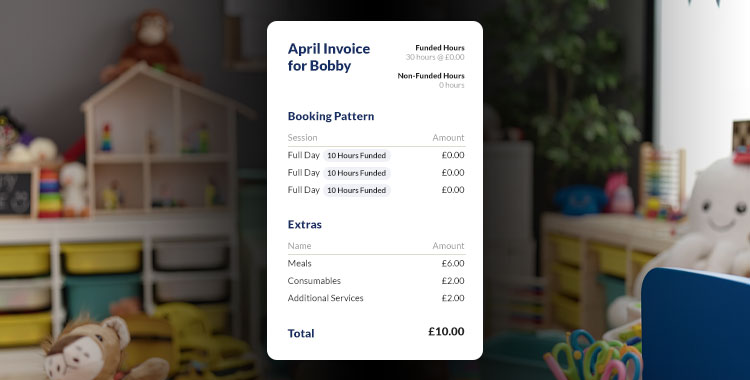In today’s digital age, technology in education has become increasingly prevalent, offering innovative ways to enhance child learning inside and outside the classroom. Digital tools revolutionise children’s learning, providing interactive, personalised, and engaging educational experiences. When used effectively, these tools can support child development, from improving literacy and numeracy skills to fostering creativity and critical thinking. This guide will explore leveraging digital tools to enhance child learning, their benefits, and tips for integrating them into educational environments.
The Role of Digital Tools in Child Learning

Digital tools have become an integral part of modern education, transforming traditional teaching methods and opening up new avenues for learning. These tools include educational apps, interactive games, digital storytelling platforms, and virtual classrooms. The essential advantage of digital tools is their ability to provide personalised learning experiences tailored to each child’s needs and interests. Whether a child is a visual, auditory, or kinesthetic learner, there is likely a digital tool that can support their preferred learning style.
Moreover, digital tools can make learning more engaging and interactive, capturing the attention of young learners in ways that traditional methods may not. For example, instead of merely reading about a scientific concept, children can use virtual reality (VR) to explore it in a 3D environment, making the learning experience more immersive and memorable. Additionally, digital tools often include gamification elements, such as rewards and progress tracking, which can motivate children to keep learning and improving.
Digital tools also enable educators to gather valuable data on student performance. This data can identify learning gaps, track progress, and tailor instruction to meet each child’s needs. For instance, if a child is struggling with a particular concept, the teacher can use the insights provided by digital tools to offer additional resources or adjust the teaching approach accordingly. This level of customisation was challenging to achieve with traditional teaching methods, but digital tools have made it possible to cater to each child’s unique learning journey.
Benefits of Digital Tools for Child Learning

Integrating digital tools into a child’s learning routine offers numerous benefits that can enhance their educational outcomes. Here are some of the key advantages:
- Personalised Learning: Digital tools allow customisation of the learning experience based on a child’s unique needs and abilities. Adaptive learning platforms, for example, adjust the difficulty of tasks based on the child’s performance, ensuring they are constantly challenged but not overwhelmed. This personalised approach can help address learning gaps and support children in mastering new skills at their own pace.
- Increased Engagement: Children are naturally drawn to technology, and digital tools can leverage this interest to make learning more engaging. Interactive apps, games, and multimedia content capture children’s attention and make learning fun. This increased engagement can lead to better information retention and a deeper understanding of concepts.
- Improved Collaboration: Many digital tools are designed to facilitate collaboration among students, encouraging them to work together on projects and share ideas. This collaborative learning environment helps children develop essential social skills like communication, teamwork, and problem-solving.
- Enhanced Creativity: Digital tools allow children to express their creativity in new and exciting ways. Whether it’s through creating digital art, composing music, or coding their games, these tools allow children to experiment, explore, and innovate.
- Access to a Wealth of Resources: The internet is a vast knowledge repository, and digital tools can give children various educational resources. From online libraries and databases to instructional videos and interactive tutorials, children can explore topics in greater depth and discover new areas of interest.
- Development of Digital Literacy: As technology becomes increasingly embedded in everyday life, digital literacy is an essential skill for the future. By using digital tools in their learning, children can develop critical skills such as navigating the internet safely, using software applications, and understanding the ethical implications of technology use.
- Support for Diverse Learning Needs: Digital tools also benefit children with special educational needs. Many apps and platforms offer features that accommodate different learning styles and disabilities, such as text-to-speech, customisable interfaces, and visual aids. This inclusivity ensures that all children can learn in a way that suits them best.
- Continuous Learning Opportunities: Digital tools provide opportunities for constant learning beyond the classroom. Children can access educational content anytime, anywhere, allowing them to explore new topics and reinforce what they’ve learned at their own pace. This flexibility supports lifelong learning habits and encourages children to become independent learners.
Types of Digital Tools for Enhancing Child Learning

There are various types of digital tools available that can enhance child learning across different subjects and skills. Below are some categories of digital tools and examples of how they can be used:
- Educational Apps: There are countless educational apps designed to support learning in math, reading, science, and languages. For example, apps like Khan Academy Kids provide interactive lessons and activities catering to different learning styles. These apps often include features like progress tracking and personalised learning paths.
- Interactive Games: Gamification in education is a powerful way to engage children in learning. Games like Prodigy for math or Scratchjr for coding teach essential skills through play, making learning enjoyable and motivating children to achieve their educational goals.
- Digital Storytelling: Platforms like Book Creator allow children to create digital stories, combining text, images, audio, and video. This not only enhances their literacy skills but also encourages creativity and self-expression.
- Virtual and Augmented Reality: VR and AR tools like Google Expeditions provide immersive learning experiences by allowing children to explore virtual environments and interact with 3D models. This can be particularly effective in science and history, where students can virtually visit places or visualise complex concepts.
- Online Collaboration Tools: Tools like Google Workspace for Education enable students to collaborate on projects in real time, no matter where they are. This fosters collaboration and helps children develop essential communication skills.
- Learning Management Systems (LMS): Platforms like Seesaw provide a structured environment for managing and delivering educational content. These systems allow teachers to assign tasks, track student progress, and communicate with students and parents, creating a cohesive learning experience.
- Interactive Whiteboards: Interactive whiteboards like SMART Boards have become a staple in many classrooms. These tools allow teachers to create dynamic lessons that engage students through touch, writing, and multimedia. Interactive whiteboards can be used for everything from teaching math equations to exploring geography through interactive maps.
- Coding and Robotics Kits: Tools like LEGO Education and Ozobot introduce children to the basics of coding and robotics. These kits provide hands-on learning experiences that teach problem-solving, logical thinking, and creativity. By building and programming their robots, children can see the direct results of their efforts, making learning fun and rewarding.
Integrating Digital Tools into Child Learning
To effectively integrate digital tools into a child’s learning routine, it’s essential to take a thoughtful and balanced approach. Here are some tips for doing so:
- Choose Age-Appropriate Tools: Only some digital tools suit some age groups. Ensure the tools you select are appropriate for the child’s age, developmental stage, and learning needs. Look for tools that are designed with educational value in mind and have been tested for safety and effectiveness.
- Set Clear Learning Goals: Before introducing a digital tool, identify the specific learning goals you want to achieve. Whether it’s improving math skills, enhancing reading comprehension, or fostering creativity, having clear objectives will help guide your choice of tools and ensure they are used effectively.
- Monitor Usage and Progress: Monitor the child’s use of digital tools often and well. Many educational apps and platforms offer progress-tracking features that can help you monitor the child’s development and identify areas where additional support may be needed.
- Balance Screen Time with Other Activities: While digital tools can enhance learning, it’s important to balance screen time with other activities, such as outdoor play, hands-on learning, and social interaction. Encourage children to take regular breaks from screens and engage in various activities to support their overall development.
- Encourage Exploration and Curiosity: Allow children to explore different digital tools and discover what interests them. This can lead to a deeper engagement with learning and a greater sense of ownership over their educational journey. Please encourage them to ask questions, experiment, and learn through trial and error.
- Involve Parents and Educators: For digital tools to be most effective, it’s essential to involve parents and educators. Guide how to use the tools and communicate regularly about the child’s progress. Collaborative efforts between home and school can reinforce learning and ensure that the child receives consistent support.
- Promote Digital Citizenship: Teach children about responsible use of technology and the importance of digital citizenship. This includes understanding online safety, respecting others’ digital rights, and being mindful of the content they consume and create. Instilling these values early on will help children navigate the digital world safely and responsibly.
Challenges and Considerations
While digital tools offer many benefits, it’s essential to be aware of potential challenges and considerations:
- Digital Divide: Not all children have equal access to technology, which can create disparities in learning opportunities. Efforts should be made to ensure all children have access to the necessary devices and internet connectivity.
- Over-Reliance on Technology: While digital tools are valuable, they should not replace traditional learning methods. A balanced approach that includes hands-on activities, social interaction, and physical play is essential for a well-rounded education.
- Privacy and Security: With the increased use of digital tools, there are concerns about data privacy and security. Ensure that your tools comply with data protection regulations and that children’s personal information is secure.
- Screen Time Management: Excessive screen time can negatively affect children’s health and well-being. Set limits on screen time and encourage a healthy balance of digital and non-digital activities.
- Content Quality: Not all digital tools and resources are created equal. Evaluating the quality of content provided by educational apps and platforms is essential to ensure that it aligns with your academic goals and values. Avoid tools that are overly commercialised or that include inappropriate content.
Conclusion
Digital tools have the potential to significantly enhance child learning by providing personalised, engaging, and interactive educational experiences. When integrated thoughtfully into a child’s learning routine, these tools can support various aspects of development, from academic skills to creativity and collaboration. However, it’s essential to balance digital tools with other learning activities and be mindful of potential challenges. By doing so, parents and educators can create a rich and supportive learning environment that helps children thrive in the digital age.
For more tips on integrating digital tools into your child’s education or to explore how Nursery in a Box can support your nursery’s digital learning initiatives, contact us today. Let’s work together to harness the power of technology to enhance learning and development for every child.
External Resources:
• Digital Literacy for Children
• Benefits of Educational Technology
• Balancing Screen Time

Hannah
Marketing Manager




